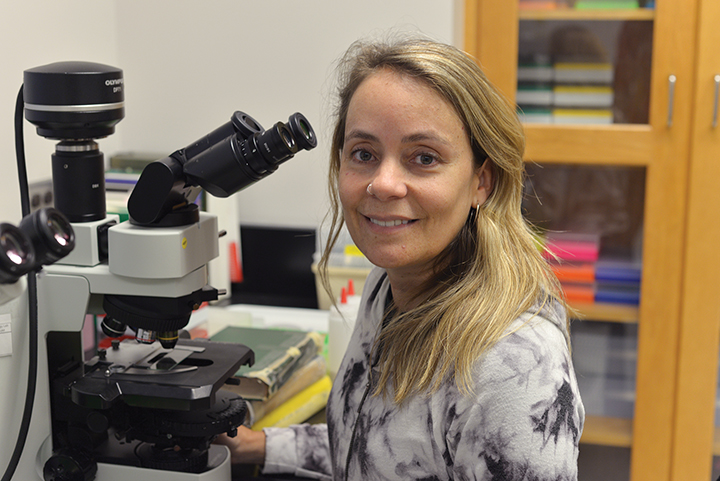Starting next fall, University of Maryland students will be able to conduct research to find ways to solve the “coffee rust” disease in addition to other natural climate issues affecting Latin and Central American countries, said Priscila Chaverri, a professor in the plant science and landscape architecture department.
Coffee rust disease is caused by a fungus that weakens the leaves of coffee plants. The disease hinders the growth of the plants and causes a decrease in coffee production, Chaverri said.
The National Science Foundation awarded a $2 million grant to Chaverri and two researchers at Ohio State University in September to conduct research over the course of five to six years, Chaverri said. She will be using $720,000 of the grant to conduct her part of the research.
Chaverri’s role in this research project will allow her to go to work with Coopetarrazu, a coffee farming cooperative located in the central region of the San Marcos de Tarazzu mountains in Costa Rica, to collect the fungi and examine it in the fields and in labs at this university and Ohio State. Three students — one undergraduate and two graduate — from this university will help Chaverri conduct her research, she said.
“I’m going to be going to the fields with students and see how the fungi is interacting inside of the plant,” Chaverri said. “This is an essential part of the project so that the other collaborators can do their parts.”
Although the disease has been around since the 1860s, the epidemic reached new heights in 2010 as it started to affect farm workers in Guatemala and other Latin American countries soon afterward. Central American countries such as Costa Rica are facing the worst of it, according to a NOLA.com article.
Since 2011, the coffee production in Central American countries has dropped 20 percent, with more than $1 billion in losses, according to an article from the International Business Times. The disease has affected about 5 million people — both directly and indirectly — in the Central American region, where coffee compromises 13.5 percent of exports and provides a living for many families, according to the article.
In Costa Rica alone, 25,000 coffee production jobs have been cut, and revenue in exports has dropped 28 percent, from 2011 to 2013.
Jason Slot, an assistant professor in Ohio States plant pathology department, said his research will be geared toward finding out how coffee plants can get the right fungi to combat diseases through genome work, which analyzes the fungi’s complete set of DNA to understand how to make the plants more sustainable to diseases.
“It’s important for us to identify mechanisms that not only help out the fungi that is inside of the coffee plants, but as a general principle how these mechanisms can be applied to different crops,” Slot said.
The last step of this research will be to measure the compounds that are produced by plants, and how those compounds can be modified by the fungi that are living in the plants, said Ana Alonso, a professor in the molecular genetics department at Ohio State.
“We will be analyzing a variety of coffee plants, and we expect that this environment will create a different set of microbes that will be living in the plants,” Alonso said. “This will help us understand if some of [the microbes] are more resistant to pathogens than others, and once we find out what microbes are more resistant, this will guide us to finding more natural control of disease in coffee plants.”
While Chaverri’s profession allows her to study these kinds of plants and fungi, she said helping solve the coffee rust issue, as well as other climate issues, is what she likes to do for a living.
“I always like to use science to solve real world issues,” she said. “I’m from Costa Rica, so I want to solve problems in my region. And now that I spend more time in Costa Rica, I have the opportunity to do the work right there, where it’s needed.”



